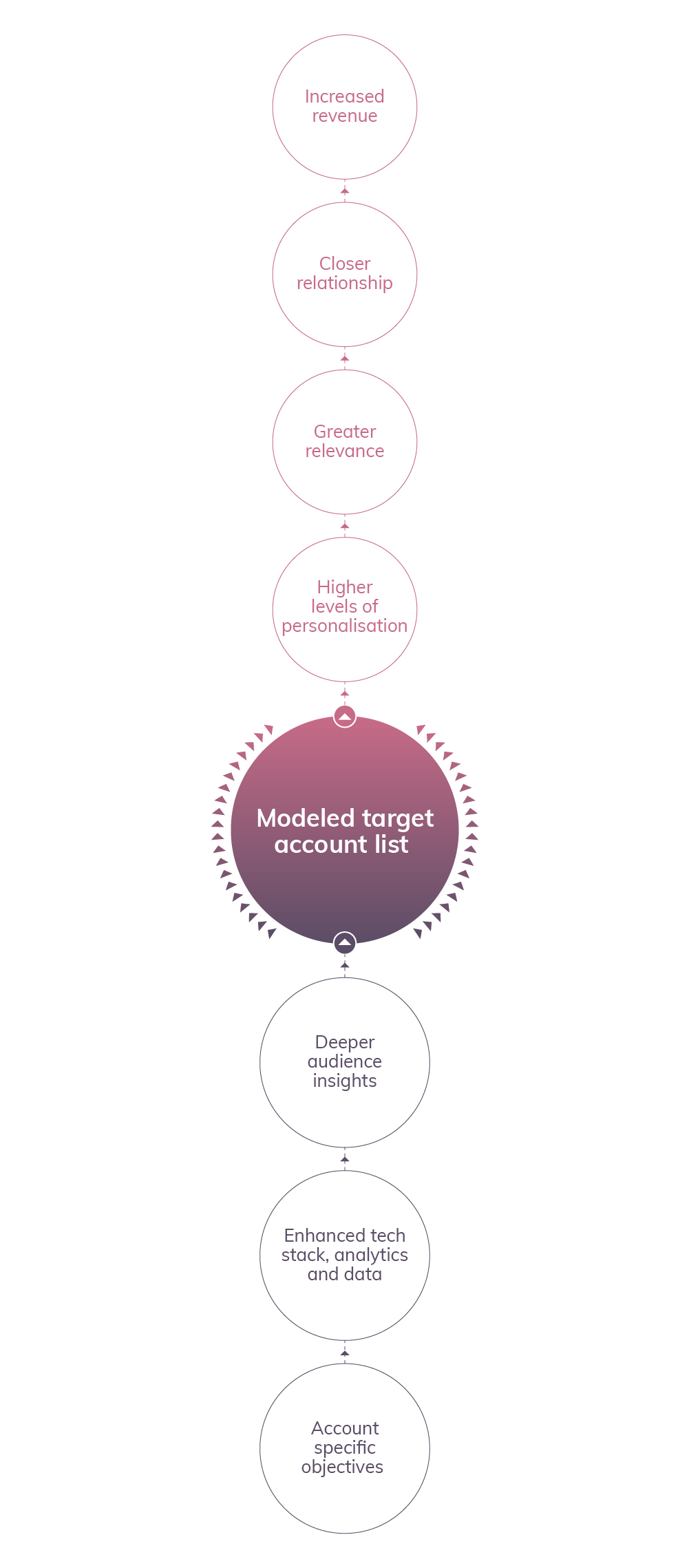The most obvious difference between Account Based Marketing and broader demand generation programs is the existence of a list of target accounts.
However, ABM practitioners will be quick to point out that there is a big difference in the work required to identify a set of high-yield accounts (though that in itself can be substantial) and delivering an improved set of business results from those accounts.
This clearly indicates that there is more to ABM than a target account list, so the question is, what are the other elements?
A clue to what is required beyond target accounts comes from another commonly applied term for the account-based approach; ABX or Account Based Experience. This label is popular amongst those who wish to emphasize the personalized experience which is a major goal of the program. It is also useful in being more inclusive of Sales. There is no doubt that the ‘M’ in ABM can be unhelpful when describing a program that should be as relevant to Sales as it is to Marketing!
Whichever term we use, the business goal of ABX/ABM is to create a more personalized experience leading to increased relevance, that helps to enable a closer relationship, and ultimately leads to increased revenue.
This identifies personalisation as a hallmark of an account-based approach.
Personalisation may be focused at industry level, around a cluster of accounts with similar attributes and/or individual accounts and the individuals that work there. Whatever the approach, it’s important to recognize that personalisation is not static – it needs to align with the buyer’s journey and the development of the account or industry.
In most ABM programs, due to the size and scope of enterprise accounts, it is also personalisation at scale. Personalisation at scale requires an economically viable (i.e. highly automated) mechanism to gain a better understanding of the target accounts.
This better understanding requires Sales and Marketing to work closer together, but it is also highly dependent on deeper audience insights to identify what is specific to the account, or what we are personalising to. The minimum audience insights in B2B tech, I’d suggest, are an understanding of the work, challenges, and current technology of the audience, but with an account based approach we need to get deeper. Deeper audience insights depend heavily on the analytics of firmographic, technographic and behavioral data performed by a tech stack designed for this purpose, often including, but not limited to, as lawyers love to say, an ABM platform.
This is another of the essential elements for ABM: An enhanced tech stack that can gather, process and automate the production of the data that is the source of those deeper audience insights.
With the judicious application of a little human expertise that enables us to create a more accurate, modelled target account list as well as a more personalized experience which creates greater relevance. That improved relevance is used to help create a closer account relationship and ultimately to increase revenue.
Why is the distinction of a modelled account list significant?
Profiles are used to validate and segment the account list, eliminating assumptions and providing clear priorities. They also enable the identification of lookalike accounts, which can increase the reach of the program. This approach offers significantly more value than an appended account list approach which is typically focused on increasing record completion and accuracy by filling in any gaps in the account record, performing de-duplication and cleaning up subsidiary structures. This work is of course also part of any modelled approach, though it is often be referred to as data enrichment.
Why is this 'added value' view of ABM a useful one?
This ‘added value’ view of ABM is a useful one, as the highly desirable uplifts in results ABM can deliver are the result of adding value to prospects and customers by increased focus, time, effort and, over time, account-based expertise. The start of that value added chain is clearly not your tech stack – it is your goals and objectives for the program. It is these that give shape to the ambition, establish new Key Performance Indicators and justify the investment.
Below is a simple visual sequence for the ABM elements described here, working together to create value. For those new to ABM, or experienced practitioners who want to step back from the complexity it can involve, we think this is a useful depiction. That said, it is not designed to provide a complete description of ABM, as the objective of this article is simply to put the target account list into context.

So far we have not discussed how Sales and Marketing need to work together, how tactics need to be orchestrated and several other vital considerations.
These will covered in the second part of the blog, where we will take this as a starting point and uncover some of the other factors we need to consider to go ‘beyond the account list’. We’ll do this by reviewing what it takes to run an effective ABM program step by step.





